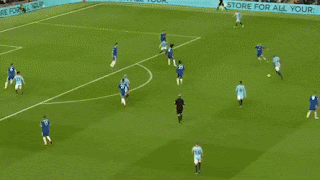As an individual, I am a person always looking to change things quickly. The mundanity of repeating the same things over and over again gets me agitated to question the efficiency of the activity. With this naive outlook, and fueled by Pink Floyd's album "Welcome to the machine" I am trying to write this blog post about the changes I've seen. Over the years I've seen some changes that happen in an organization and this blog is more of a commentary on the things that I've seen. Without question, this blogpost has a major TL;DR warning.
Life in a corporate office might seem a little kafkaesque. Kafkaesque, A term associated with Frans Kafka generally is used to describe unnecessarily complicated and frustrating experiences, like being forced to navigate labyrinths of bureaucracy. The sort of complex, unclear processes in which no one individual ever really has a comprehensive grasp of the system or what is going on.
In massive companies that are well established, they are driven by SOP's - Standard operating procedure - after SOP. These companies are so entrenched in bureaucracy it takes eons before a decision is even taken. In my opinion, this is the main reason these companies lookout for vendors to get the job done, with the other factor of cost. With vendors, we get a rapid disruption of the process that existed. Usually, the vendors turn out to be smaller organizations with fewer levels of approvals. But this also acts like a self-terminating loop, as these smaller organizations are also subjected to growth with the amount of time they are in the market. As they grow they bring in multiple layers to the organization constantly sifting through every decision.
Bureaucracy is not all bad, if done right it creates a strong structure that ushers in a sense of equality among everyone involved in the system. It adds predictability, with the right set of checks and balances we can control the outcome of the process, as humanly possible at least. with all the roles and responsibilities defined we get a centralized power dynamic in the organization, we also get a well-defined chain of command.
The key thing with all the red tape is that if it is not done right it adversely affects the motive with which it was put in place. generally, the SOP that was put in place may be too regressive and there is a high chance that the process might have worked in the past but with time being as volatile as it is the process might just be too outdated. With drawn-out SOP it creates an ecosystem that suffocates creative minds. For creative minds to thrive they need a liberalistic atmosphere.
Compartmentalization is a common path taken to create scalability in terms of decision making and the structuring of organizations. In the blog Break Through Your Mental Bureaucracy - Ron Ashkenas talks about how compartmentalization is a form of “mental bureaucracy”. Companies compartmentalize into blocks and predominantly the blocks used are segmented into marketing, development, HR, and finance.
With a compartmentalized work environment, the teams involved start to have a diminished outlook on the deliverables and often have a game of finger-pointing with block constantly resonating the statement " that is not part of my job". Different blocks are only concerned about their own propositions and as an outcome, nobody takes a decision when it does not concern their base. Teams oftentimes don't see the big picture as they are more focused on their own activities laid out by their respective blocks. It becomes an organization defined only by the KPI's they have to complete.
In closing, I've observed creativity always takes a blow when we try to bring in a set of rules. Creativity is essential for human beings let alone organization, for without creativity we would all just be doing the same boring thing. A good explanation of creativity is, "everyone knows the rules to a game, let's say like
football. It is creativity that gives you the Kompany or David silva of the game. If they all had just followed the rules and not been creative we would've had a boring game to watch". The same applies to corporate lifestyles, if everyone in the organization is trying to stick to their own objectives and not look at the larger view of the organization the extent of growth becomes non-existent.

Comments
Post a Comment